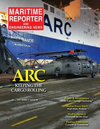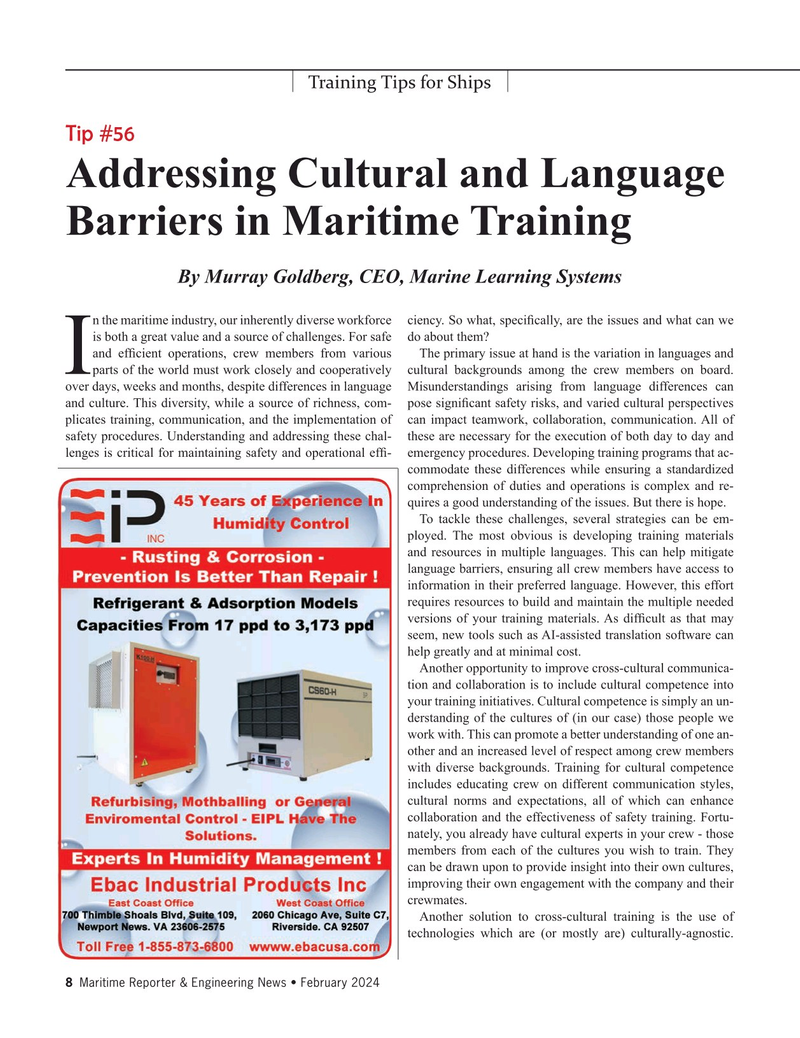
Page 8: of Maritime Reporter Magazine (February 2024)
Read this page in Pdf, Flash or Html5 edition of February 2024 Maritime Reporter Magazine
Training Tips for Ships
Tip #56
Addressing Cultural and Language
Barriers in Maritime Training
By Murray Goldberg, CEO, Marine Learning Systems n the maritime industry, our inherently diverse workforce ciency. So what, speci? cally, are the issues and what can we is both a great value and a source of challenges. For safe do about them?
and ef? cient operations, crew members from various The primary issue at hand is the variation in languages and
Iparts of the world must work closely and cooperatively cultural backgrounds among the crew members on board. over days, weeks and months, despite differences in language Misunderstandings arising from language differences can and culture. This diversity, while a source of richness, com- pose signi? cant safety risks, and varied cultural perspectives plicates training, communication, and the implementation of can impact teamwork, collaboration, communication. All of safety procedures. Understanding and addressing these chal- these are necessary for the execution of both day to day and lenges is critical for maintaining safety and operational ef? - emergency procedures. Developing training programs that ac- commodate these differences while ensuring a standardized comprehension of duties and operations is complex and re- quires a good understanding of the issues. But there is hope.
To tackle these challenges, several strategies can be em- ployed. The most obvious is developing training materials and resources in multiple languages. This can help mitigate language barriers, ensuring all crew members have access to information in their preferred language. However, this effort requires resources to build and maintain the multiple needed versions of your training materials. As dif? cult as that may seem, new tools such as AI-assisted translation software can help greatly and at minimal cost.
Another opportunity to improve cross-cultural communica- tion and collaboration is to include cultural competence into your training initiatives. Cultural competence is simply an un- derstanding of the cultures of (in our case) those people we work with. This can promote a better understanding of one an- other and an increased level of respect among crew members with diverse backgrounds. Training for cultural competence includes educating crew on different communication styles, cultural norms and expectations, all of which can enhance collaboration and the effectiveness of safety training. Fortu- nately, you already have cultural experts in your crew - those members from each of the cultures you wish to train. They can be drawn upon to provide insight into their own cultures, improving their own engagement with the company and their crewmates.
Another solution to cross-cultural training is the use of technologies which are (or mostly are) culturally-agnostic. 8 Maritime Reporter & Engineering News • February 2024
MR #2 (1-17).indd 8 2/6/2024 9:36:37 AM

 7
7

 9
9
